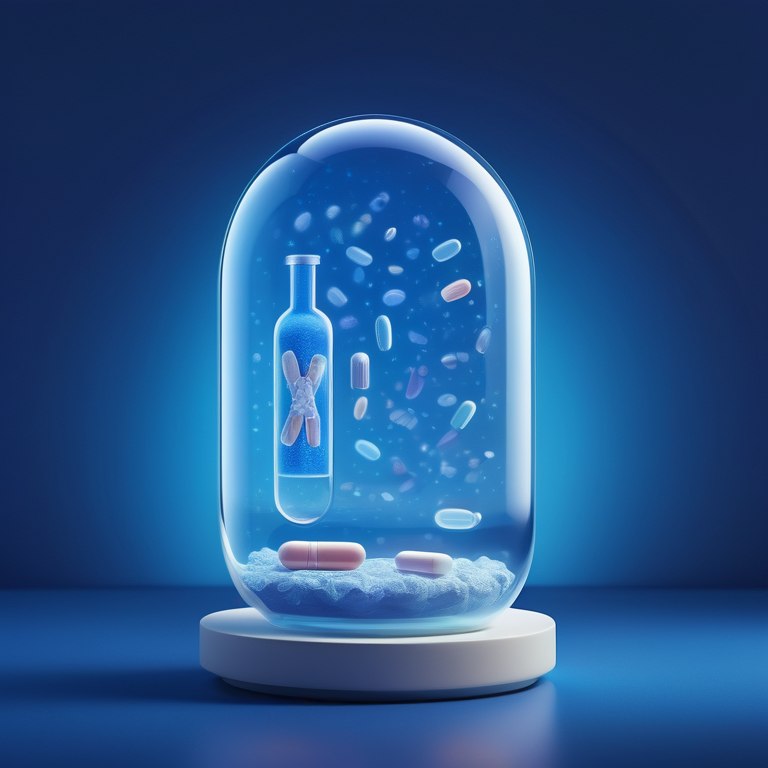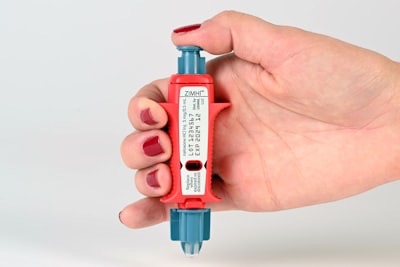Understanding How Prescription Medication Works

Key Highlights
- Prescription medication undergoes a rigorous drug development process before it reaches the market
- Clinical trials play a crucial role in ensuring the safety and efficacy of prescription drugs
- Prescription drugs are classified differently from over-the-counter medicines
- Understanding the mechanism of action of medications helps to comprehend how they work in the body
- Dosage and administration are essential factors for the effectiveness of prescription medications
- Side effects and drug interactions are important considerations when taking prescription drugs
Introduction

Prescription medication plays a vital role in modern healthcare, helping to manage and treat a wide range of medical conditions. Whether it’s antibiotics to fight off an infection or medication to control chronic illnesses like diabetes or hypertension, understanding how prescription medication works is essential for both patients and healthcare professionals. In this blog, we will explore the journey of prescription medication, from its development in the lab to its availability in the pharmacy. We will also delve into the science behind how medications work in the body, the importance of dosage and administration, and the potential side effects and drug interactions. By gaining a deeper understanding of prescription medication, we can make informed decisions about our healthcare and ensure the safe and effective use of these drugs.
The Journey of Prescription Medication: From Development to Dispensary

Prescription medication goes through a complex and rigorous process before it is available in the pharmacy. The journey begins with drug development, where scientists identify potential compounds and conduct extensive research to assess their safety and effectiveness. Once a promising candidate is identified, it undergoes preclinical testing, followed by clinical trials involving human participants. These trials provide crucial data on the drug’s safety, dosage, and efficacy. If the drug successfully completes the clinical trial phase, it is submitted to the Food and Drug Administration (FDA) for approval. Upon approval, it is manufactured, packaged, and distributed to pharmacies for dispensing to patients.
Understanding the Drug Development Process

The drug development process is a complex and time-consuming endeavor that involves several stages. It starts with the identification of potential drug candidates through extensive research and screening. Once a candidate is selected, it goes through preclinical testing in the lab and on animals to evaluate its safety and effectiveness. If the results are promising, the drug progresses to the clinical trial phase, where it is tested on human participants. Clinical trials are divided into three phases, each focusing on different aspects such as safety, dosage, and efficacy. The data collected from these trials is then submitted to the FDA for review and approval. This rigorous process ensures that only safe and effective medications reach the market.
The Role of Clinical Trials in Ensuring Safety and Efficacy

Clinical trials play a crucial role in the development and evaluation of prescription medications. These trials are designed to assess the safety and effectiveness of the drug in a controlled environment. They involve carefully selected human participants who are closely monitored throughout the trial period. The data collected from these trials helps researchers and regulatory authorities determine the appropriate dosage, identify potential side effects, and assess the overall efficacy of the medication. By conducting clinical trials, scientists can gather valuable information that ensures the safety and efficacy of prescription drugs before they are made available to the general public. This rigorous testing process helps to protect patients and improve the quality of healthcare.
How Prescription Drugs and Meds Are Classified

Prescription drugs are classified differently from over-the-counter medicines. The classification system used for prescription drugs is known as the American Hospital Formulary Service (AHFS) classification, developed by the American Society of Health-System Pharmacists (ASHP). This system categorizes prescription drugs based on their therapeutic use, pharmacological action, and chemical structure. Each category is assigned a unique code, making it easier for healthcare professionals to identify and prescribe the appropriate medication for their patients, especially in emergency situations such as an accidental overdose or drug poisoning. Understanding the classification system can help patients and healthcare professionals navigate the vast array of prescription drugs available, including those listed in ASHP Monographs, and ensure that the right medication is prescribed for each specific condition.
The Difference Between Over-the-Counter and Prescription Drugs
The main difference between over-the-counter (OTC) and prescription drugs lies in how they are accessed by the public. OTC medications can be purchased without a prescription and are typically used to treat common ailments such as headaches, allergies, or minor pain. Prescription drugs, on the other hand, require a prescription from a healthcare professional and are used to treat more complex or chronic conditions. Prescription drugs often have a higher potency and are subject to stricter regulations to ensure their safe and appropriate use. Consulting with a healthcare professional is essential when considering the use of prescription drugs to ensure proper diagnosis and treatment.
| Category | Description |
| Analgesics | Medications used to relieve pain |
| Antibiotics | Medications used to treat bacterial infections |
| Antihypertensives | Medications used to lower blood pressure |
| Antidepressants | Medications used to treat depression and other mood disorders |
| Anticoagulants | Medications used to prevent blood clots |
| Antidiabetic drugs | Medications used to manage diabetes |
| Antipsychotics | Medications used to treat mental disorders |
Understanding the different categories of prescription medications, or “meds”, can help patients and healthcare professionals choose the most appropriate treatment option for a specific condition. Each category has its own mechanisms of action and potential side effects. It is important to follow the prescribed dosage and consult with a healthcare professional for proper guidance.
The Science Behind How Medications Work

Prescription medications interact with the body at a molecular level, targeting specific receptors, enzymes, or pathways to produce a therapeutic effect. The mechanism of action of a drug refers to the specific biochemical interactions that occur between the drug and its target. Understanding the mechanism of action helps to comprehend how medications work in the body and why they are effective for certain conditions. This knowledge aids in the development of new medications and allows healthcare professionals to make informed decisions when prescribing and administering drugs.
The Mechanism of Action: How Drugs Affect the Body

Each prescription drug has a unique mechanism of action that determines how it interacts with the body. For example, painkillers may target specific receptors in the central nervous system to block pain signals. Antidepressants work by altering the levels of neurotransmitters in the brain to improve mood. Understanding the mechanism of action allows healthcare professionals to select the most appropriate medication for a specific condition. It also helps patients understand how the medication will work in their body and what to expect in terms of therapeutic effects and potential side effects. By targeting specific pathways or molecules, prescription drugs can effectively treat a wide range of medical conditions.
Factors Influencing Drug Effectiveness
Several factors can influence the effectiveness of prescription medications. One crucial factor is the dosage. The prescribed dosage must be followed carefully to achieve the desired therapeutic effect. Taking too little or too much of a medication can result in suboptimal outcomes or potentially harmful effects. Other factors that can affect drug effectiveness include an individual’s overall health, the presence of other medical conditions, and the use of other medications. It is essential for healthcare professionals to consider these factors when prescribing medications and for patients to communicate openly about their health and medication history to ensure the best possible treatment outcomes.
The Importance of Dosage, Supplements and Administration

Proper dosage and administration are critical for the safe and effective use of prescription medications. The prescribed dosage is determined based on factors such as the patient’s age, weight, overall health, and the severity of the condition being treated. It is important to follow the prescribed dosage instructions carefully and not exceed or skip doses. The route of administration, such as oral, topical, or injection, also plays a role in the drug’s effectiveness. Proper administration techniques, such as using the correct device or applying the medication correctly, ensure that the drug is delivered to the intended site of action and maximizes its therapeutic effects.
Prescription medications are available in various dosage forms, including tablets, capsules, liquids, patches, and injections. The choice of dosage form depends on factors such as the drug’s properties, patient preferences, and the desired therapeutic effect. Different routes of administration can also affect how a medication is absorbed and metabolized in the body. For example, oral medications are taken by mouth and pass through the digestive system, while injections deliver the drug directly into the bloodstream. Understanding the different dosage forms and routes of administration is important for patients in the United States to ensure proper medication use. The use of pill identifiers can also aid in identifying medications based on their appearance, imprint codes, and other distinguishing features.
The Impact of Dosage Timing and Adherence on Treatment Success
The timing and adherence to prescribed dosages are crucial for the success of treatment with prescription medications. Some medications need to be taken at specific times of the day to optimize their effectiveness or minimize potential side effects. Adherence refers to the extent to which patients follow the prescribed dosage schedule. Poor medication adherence can lead to suboptimal treatment outcomes and potentially compromise the effectiveness of the drug. It is important for patients to understand the importance of adhering to their medication regimen and to communicate any challenges or concerns they may have with their healthcare professional. By adhering to the prescribed dosage and timing, patients can maximize the benefits of their medication and improve their overall treatment success.
Side Effects and Drug Interactions and overdose

Prescription medications can have potential side effects and interactions with other medications, supplements, or certain foods. Side effects are unintended effects that can occur alongside the desired therapeutic effect of a drug. These side effects can range from mild to severe and may vary between individuals. Drug interactions occur when one medication affects the way another medication works, potentially leading to increased or decreased effectiveness or adverse effects. It is important to discuss any concerns or questions regarding side effects and drug interactions with a healthcare professional or pharmacist to ensure the safe and effective use of prescription medications.
Common Side Effects and How to Manage Them
Side effects are a common concern when it comes to prescription medication. While not everyone will experience side effects, it is important to be aware of the potential risks and how to manage them. Common side effects can include nausea, dizziness, headache, and fatigue. It is important to communicate any side effects to your healthcare provider, as they may be able to adjust your medication or provide recommendations for managing them. In some cases, side effects may subside over time as your body adjusts to the medication. It is important to follow the prescribed dosage and not to stop taking your medication without consulting your healthcare provider.
Text Table:
| Common Side Effects |
| Nausea |
| Dizziness |
| Headache |
| Fatigue |
The Significance of Understanding Drug Interactions
Understanding drug interactions is crucial for patient safety. Drug interactions occur when two or more medications interact with each other and can lead to unexpected side effects or a decrease in the effectiveness of one or more medications. It is important to inform your healthcare provider about all the medications, including prescription medications, over-the-counter medications, and dietary supplements, that you are taking. Your healthcare provider can identify potential drug interactions and make necessary adjustments to your medication regimen. Pharmacists also play a key role in identifying and managing drug interactions. It is important to consult with your pharmacist if you have any concerns about potential drug interactions or if you are starting a new medication.
Navigating the Prescription Process
Navigating the prescription process involves several steps, from obtaining a prescription to filling it at a pharmacy. The process typically begins with a healthcare provider evaluating your medical condition and prescribing a medication. Once you have a prescription, you can take it to a pharmacy to have it filled. It is important to provide accurate information to your pharmacist, including your insurance details, to ensure a smooth prescription filling process. Understanding your insurance coverage and payment options for prescription medications is also important to manage costs and ensure timely access to your medications.
From Prescription to Pharmacy: What Patients Need to Know
Once you have a prescription, it is important to understand the steps involved in getting your medication from the prescription to the pharmacy. First, you need to choose a pharmacy where you want to get your prescription filled. You can take the prescription to the pharmacy in person or use online services to have it delivered. It is important to provide accurate information to the pharmacy, including your insurance details, to ensure smooth processing. The pharmacy will then verify the prescription, dispense the medication, and provide information on how to take the medication properly, including important info such as potential side effects and drug interactions. If you have any questions or concerns, it is important to ask the pharmacist for clarification, as they are trained health care professionals. Additionally, the pharmacy may also provide you with helpful info on how to use WebMD’s Pill Identifier to ensure you are taking the correct medication.
Insurance and Payment Options for Prescription Medications
Understanding your insurance coverage and payment options for prescription medications is essential to manage costs and ensure timely access to your medications. Insurance plans may have different coverage levels for different medications, so it is important to review your plan’s formulary to understand which medications are covered and at what cost. Some insurance plans may require prior authorization or step therapy, which means you need to try lower-cost alternatives before accessing certain medications. It is also important to explore other payment options, such as prescription discount cards or patient assistance programs, if you have limited insurance coverage or high out-of-pocket costs.
Innovations in prescription medication are transforming the way healthcare is delivered. Personalized medicine is an emerging field that aims to tailor treatments to individual patients based on their genetic makeup, lifestyle, and other factors. This approach has the potential to improve treatment outcomes and reduce adverse effects. Advancements in drug development are also making it possible to target specific disease pathways and develop more effective and targeted medications. From gene therapy to nanotechnology, these innovations hold great promise for the future of healthcare.
The Rise of Personalized Medicine
Personalized medicine is revolutionizing the field of healthcare by tailoring treatment plans to individual patients. This approach takes into account a patient’s genetic makeup, lifestyle, and other factors to determine the most effective course of treatment. Personalized medicine has the potential to improve treatment outcomes, minimize adverse effects, and optimize therapy for patients with complex conditions. It allows healthcare providers to select the most appropriate medication and dosage for each patient, leading to more precise and effective treatment. As our understanding of genetics and disease mechanisms continues to advance, personalized medicine is likely to play an increasingly important role in healthcare.
Future Trends in Drug Development and Delivery
Drug development and delivery are constantly evolving to meet the needs of patients and healthcare providers. The future of drug development is focused on targeted therapies, which aim to selectively target disease pathways while minimizing side effects. This includes the development of biologics, gene therapies, and nanotechnology-based treatments. Additionally, advancements in drug delivery systems, such as implantable devices and targeted drug delivery, are improving the efficacy and convenience of medication administration. These innovations have the potential to transform the way we treat diseases and improve patient outcomes.
Conclusion
Understanding how prescription medication works is crucial for patients to make informed decisions about their health. From drug development to administration, knowledge empowers individuals to navigate the complexities of prescription drugs effectively. Dosage, timing, and adherence play vital roles in treatment success, while awareness of side effects and interactions promotes safe usage. It’s essential to communicate openly with healthcare providers, understand insurance coverage, and explore alternative options when appropriate. By staying informed and proactive, patients can optimize the benefits of prescription medications and enhance their overall well-being.
Common misconceptions about prescription medication
There are several common misconceptions about prescription medication that can lead to misinformation and misunderstandings. Some people may believe that prescription medications are always more effective than over-the-counter medications, while others may assume that all prescription medications have serious side effects. It is important to dispel these misconceptions and educate patients about the benefits, risks, and appropriate use of prescription medications. By providing accurate information and addressing common misconceptions, healthcare providers can ensure that patients make informed decisions about their treatment options.
Alternative options to prescription medication for certain conditions
While prescription medication is often an important part of treatment for many conditions, there are also alternative options available for certain conditions. In some cases, dietary supplements, such as vitamins and herbal remedies, can be used to support overall health and manage specific symptoms. However, it is important to consult with a healthcare provider before starting any alternative treatment to ensure its safety and effectiveness. Healthcare providers can provide guidance on the appropriate use of alternative options and help patients make informed decisions about their treatment plans.
What Should I Do If I Experience Side Effects?
If you experience side effects from a prescription medication, it is important to notify your healthcare provider. They may be able to adjust your medication or provide recommendations for managing the side effects. It is important not to stop taking your medication without consulting your healthcare provider.
How do prescription medications differ from over-the-counter medications?
Prescription medications are typically stronger than over-the-counter medications and require a prescription from a healthcare provider. They are often used to treat more complex or serious medical conditions. Over-the-counter medications, on the other hand, can be purchased without a prescription and are generally used to treat milder symptoms.
Are there any potential side effects or risks associated with taking prescription medications?
Yes, there can be potential side effects and risks associated with taking prescription medications. It is important to discuss the potential risks and benefits of a medication with your healthcare provider before starting treatment. Your healthcare provider can provide guidance on managing potential side effects and monitoring for any risks associated with the medication.
https://findtreatment.samhsa.gov
https://www.webmd.com/rheumatoid-arthritis/video/ra-biologic-drugs
https://www.youtube.com/user/NIDANIH
https://public.govdelivery.com/accounts/USNIHNIDA/subscriber/new
https://www.webmd.com/drugs/2/index
https://familydoctor.org/your-health-resources/drugs-procedures-and-devices/prescription-medicines
